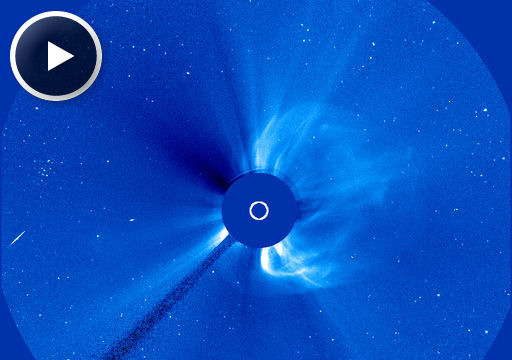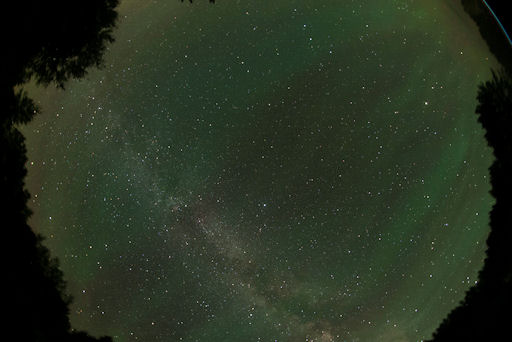Thirty-five new items have just been added to our Meteorite Jewelry collection. Browse the Space Weather Store for something out of this world. | | |
SALLY RIDE (1951 - 2012): Astronaut and physicist Sally Ride died today, July 23rd, following a 17-month battle with cancer. Ride, who became the first American women in space in 1983 when she orbited Earth onboard the space shuttle Challenger, was known for her courage, intelligence, and dedication to young scientists, especially girls. We add our condolences to those of NASA and many others over the loss of a true American original.
VERY FAST FARSIDE CME: A coronal mass ejection (CME) blasted away from the sun this morning with rare speed: 2930 km/s or 6.5 million mph. CMEs moving this fast occur only once every ~5 to 10 years. The Solar and Heliospheric Observatory recorded the cloud's emergence on July 23rd starting around 0300 UT:

The source of the CME was sunspot AR1520, which sparked many bright auroras earlier this montth when it was on the Earthside of the sun. Now, however, the active region is transiting the sun's farside so this blast was not geoeffective. One can only imagine the geomagnetic storms such a fast CME could produce if it were heading our way. Stay tuned for additional analysis.
Update: According to a forecast track prepared by analysts at the Goddard Space Weather Lab, this CME will miss all of the solar system's inner planets.
Realtime Aurora Photo Gallery
NOT AURORAS: On some nights when the moon is new and city lights are far away, the sky turns green. But it's not the aurora borealis--it's airglow. Brian Larmay photographed the phenomenon on July 20th from the countryside near Beecher, Wisconsin:

"The airglow was intense enough to see visually," says Larmay. "I decided to create a brief animation of this phenomena with an 8mm fisheye lens which can be seen here."
Although airglow resembles the aurora borealis, its underlying physics is different. Airglow is caused by an assortment of chemical reactions in the upper atmosphere. During the day, ultraviolet radiation from the sun ionizes atoms and breaks apart molecules. At night, the atoms and molecules recombine, emitting photons as they return to normal. This process produces an aurora-like glow visible on very dark nights.
July 20th must have been a good night for airglow, because Warren Justice of Manitoba, Canada, saw it too.
Realtime Space Weather Photo Gallery
Realtime Noctilucent Cloud Photo Gallery
[previous years: 2003, 2004, 2005, 2006, 2007, 2008, 2009, 2011]

